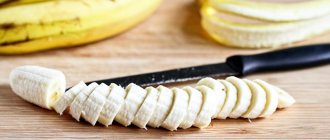Properties of salt in the digestive process
The salt that people are accustomed to eating is a chemical combination of two important elements: sodium and chlorine. Both elements are needed by the body for normal functioning; their deficiency can lead to serious consequences.
Without sodium chloride, the normal functioning of internal organs is impossible. He is responsible for:
- formation of hydrochloric acid in the stomach;
- providing conditions for the existence of red blood cells in the blood;
- filling cells with water;
- maintaining normal pressure in blood vessels;
- coordination of muscle contractility;
- kidney function.
Interesting! With the help of a special saline solution (saline solution), it became possible to administer vital drugs intravenously into the human body using the drip method, because blood plasma contains an identical amount of sodium chloride as the artificially created solution.
The danger of oversupply
The main danger of excess salt consumption lies in its main feature - it retains fluid. This prevents the kidneys from performing their filtering function and significantly increases blood pressure. Exceeding salt intake leads to tissue swelling, which puts additional stress on the cardiovascular system.
For your information. The child’s well-being also deteriorates significantly – moodiness due to headaches and sleep disturbances are observed.
Lack of sodium in the child's body
If the baby is breastfed or fed an adapted milk formula, there cannot be a deficiency of sodium chloride in the body. The required amount of salts is supplied to it with mother's milk or formula. There are situations that contribute to disruption of the water-salt balance. Among them:
- increased body temperature;
- excessive sweating due to non-compliance with the temperature in the room;
- vomit;
- diarrhea;
- dysfunction of the adrenal glands.
Important! At the first appearance of dangerous symptoms, the child must be helped to replenish the water-salt balance with the help of special oral rehydration products.
Regidron
Harm
The negative effects of sodium chloride are mainly due to excess salt intake.
A lot of this seasoning is contraindicated for children, since salt will:
- Retains water in the tissues, which causes swelling and increases the load on the excretory system.
- Increase blood pressure, making it harder for the heart to work.
- Affect calcium metabolism, resulting in bone fragility and teeth deterioration.
- Provoke thirst and increase appetite, which leads to overeating.
- Have a stimulating effect on the nervous system, which is manifested by irritability, restless behavior and nervousness.
Excessive salt consumption is harmful not only for children, but also for adults.
Recommendations of Dr. Komarovsky
At what age can you give your child tangerines?
Popular pediatrician E. Komarovsky claims that 12 months is the age when a child can already be given salt, but in moderation. The amount of salt consumed depends not only on the baby’s age, but also on his weight.
Let’s assume the following calculation of daily consumption: 0.5 g of salt per 10 kg of baby’s weight. If a mother gets her hands on a box with a finished product, and she wants to know whether it can be given to the child or not, she should carefully study the composition. On the packaging, manufacturers indicate the amount of minerals included in the composition. The maximum permissible salt content per 100 g of product is less than 1.5 g, sodium per the same amount of finished product is less than 0.6 g.
At what age can a child be given sugar?
For a child, sugar primarily acts as a source of fast carbohydrates, which provide the child’s body with energy for active movements and mental processes. Its use activates many processes in the child’s body and also has a positive effect on brain function.
In addition, sugar affects the child’s mood, since the sweet taste of food brings pleasure. A good property is also its inhibitory effect on many harmful microorganisms, due to which it is used as a natural preservative.
The famous pediatrician Dr. E. Komarovsky talks about the dangers:
At what age can you give
Doctors advise delaying introduction to sugar as much as possible, but after a year, adding it to a child’s meals in small quantities is acceptable. The norm for children under 3 years old is 6 g of sugar per day, and for children 3-6 years old - 7 g of this product.
As for sweet dishes, the menu for children 1-3 years old can include some marshmallows, marshmallows or marmalade, as well as homemade cakes and jam. It is advised not to give chocolate, honey, ice cream and confectionery to children under 3 years of age.
Opinion of E. Komarovsky
The famous pediatrician does not consider it evil and does not claim its categorical harmfulness. On the contrary, Komarovsky emphasizes that it is sugar and other carbohydrates that are important for the functioning of the child’s body.
As for sugar in the diet of children over one year old, the famous doctor does not see it as a big problem if the child is healthy and active, and sweet foods are not used to replace healthier foods, such as cereals or vegetables.
Watch the episode of Evgeniy Komarovsky’s program, which examines in detail the topic of sugar and sugar-based products in the children’s diet:
Which one to give?
may also be present on your child’s menu . The raw material for obtaining such a product is sugar cane.
Since such unrefined sugar is less refined than white sugar, it retains a certain amount of B vitamins and minerals (calcium salts, phosphorus, potassium, magnesium, iron).
Brown sugar has no other benefits because it is also high in calories and can cause the same problems as beets. In addition, it can cause allergies.
Should I give fructose instead of sugar?
Another common substitute for regular sugar is fructose, which can be purchased everywhere in diabetic supply departments. This product is obtained from berries and fruits.
These factors make it possible to include fructose in children's menus instead of traditional sugar, but moderation in its use is also necessary, since excess fructose in the diet can cause obesity.
Sweeteners
For information about which is better, see the program Living Healthy.
All rights reserved, 14+
Copying site materials is possible only if you install an active link to our site.
https://www.o-krohe.ru/detskoe-pitanie/prikorm/sahar/
When can you add salt to your food?
At what age can you give your child a fresh apple?
Parents who ask a pediatrician about the age at which salt can be given to their child receive a clear answer - after a year. It is important to observe moderation here. Even after adding seasoning to an adult's palate, the food should still taste bland. To correctly calculate the amount of flavor enhancer for a children's dish, you can prepare a solution:
- Boil 200 ml of water;
- Add 20 g salt;
- Stir thoroughly.
Half a teaspoon of the resulting solution can be added to a two-hundred-gram portion of a ready-made baby dish.
Types of salt
Today on the shelves you can find a wide range of irreplaceable seasonings. The difference between specimens is noted both in the amount of impurities and in the methods of extraction. Today you can salt your food using any of the following types:
- Stone. This is the most popular variety and is often called table or table variety. It is extracted from natural salt formations.
- Refined. This is processed rock salt that has undergone heat treatment and purification from impurities. Attracts housewives with its snow-white appearance.
- Iodized. This is rock salt enriched with iodine. It is useful for people diagnosed with iodine deficiency.
- Marine. It is obtained by evaporating sea water. Depending on which sea the seasoning was extracted from, it may also contain other minerals: magnesium, iron, calcium, potassium.
Important! The use of an iodized version will help replenish iodine deficiency only when it is seasoned with cold dishes that do not require heat treatment. Otherwise, the iodine will evaporate without entering the body.
Choosing the “right” seasoning
For children, it is acceptable to use regular rock (table) salt. The type enriched with iodine can be used in the preparation of children's dishes only as prescribed by a doctor.
Refined salt is not suitable for baby food, because after heat treatment various substances are added to it to increase the flowability and uniformity of the grains.
Prohibited salty foods
Modern industry uses salt as an essential flavor enhancer and preservative. Today it is difficult to find absolutely bland goods on store shelves. White seasoning significantly increases the shelf life of the product and causes a taste addiction, which makes the consumer want to eat this product again and again.
Child and fast food
Having decided the question of at what age can a child sometimes salt their food, parents forget about ready-made products that initially contain an unacceptable amount of seasoning.
Every adult should know the list of foods that should not be fed to children:
- canned vegetables;
- sausages;
- fast food (chips, crackers, hamburgers, french fries, pizza);
- popular sauces (ketchup, mayonnaise);
- semi-finished products.
According to pediatricians, the later a child tries foods that are harmful to him, the better.
Consumption standards for children under one year old by month
Pediatricians do not recommend adding additional salt to dishes for children under one year old. You can create a table of seasoning consumption rates in grams, according to the child’s age.
Salt consumption standards
| Age, months | Child's weight, kg | Salt consumption rate, g. |
| 0-6 | 2,9-6,5 | 0,5 |
| 6-12 | 7-9,5 | 0,5 |
| 12-36 | 10-15 | 0,75 |
First meeting
A baby's acquaintance with salt begins the moment he is applied to the breast (bottle), because human milk (formula) contains sodium (15 mg/100 ml) and chlorine (43 mg/100 ml). There are 2-3 times more of them in cow's milk, this is one of the reasons why it should not be offered to children under one year of age.
In the first 5-6 months of a baby’s life, breast milk (adapted formula) and clean water are enough. From these products he gets the amount of chlorine and sodium ions he needs. With the beginning of introducing complementary foods, the mother has many questions: can or cannot add white seasoning to the baby’s first treats, when to do it, in what quantities. Most pediatricians believe that the minimum age limit is 9 months, but it is better to wait until a year.
If the baby does not eat fresh food
If the mother ignored the instructions of the pediatrician, who told her when to introduce salt and sugar into the child’s diet, then the baby, having tasted the seasonings, will, of course, refuse bland food. In order for the taste of complementary foods to resemble the usual food, the mother will have to add breast milk or formula in a small amount to the dish.
Proper complementary feeding
There is no need to rush into introducing your baby to the adult table. Mom will still have time to salt the dish. While the baby’s internal organs are not yet ready, it is wise to follow the pediatrician’s recommendations.
At what age can a child be given sugar?
For a child, sugar primarily acts as a source of fast carbohydrates, which provide the child’s body with energy for active movements and mental processes. Its use activates many processes in the child’s body and also has a positive effect on brain function.
In addition, sugar affects the child’s mood, since the sweet taste of food brings pleasure. A good property is also its inhibitory effect on many harmful microorganisms, due to which it is used as a natural preservative.
The famous pediatrician Dr. E. Komarovsky talks about the dangers:
At what age can you give
Doctors advise delaying introduction to sugar as much as possible, but after a year, adding it to a child’s meals in small quantities is acceptable. The norm for children under 3 years old is 6 g of sugar per day, and for children 3-6 years old - 7 g of this product.
As for sweet dishes, the menu for children 1-3 years old can include some marshmallows, marshmallows or marmalade, as well as homemade cakes and jam. It is advised not to give chocolate, honey, ice cream and confectionery to children under 3 years of age.
Opinion of E. Komarovsky
The famous pediatrician does not consider it evil and does not claim its categorical harmfulness. On the contrary, Komarovsky emphasizes that it is sugar and other carbohydrates that are important for the functioning of the child’s body.
As for sugar in the diet of children over one year old, the famous doctor does not see it as a big problem if the child is healthy and active, and sweet foods are not used to replace healthier foods, such as cereals or vegetables.
Watch the episode of Evgeniy Komarovsky’s program, which examines in detail the topic of sugar and sugar-based products in the children’s diet:
Which one to give?
may also be present on your child’s menu . The raw material for obtaining such a product is sugar cane.
Since such unrefined sugar is less refined than white sugar, it retains a certain amount of B vitamins and minerals (calcium salts, phosphorus, potassium, magnesium, iron).
Brown sugar has no other benefits because it is also high in calories and can cause the same problems as beets. In addition, it can cause allergies.
Should I give fructose instead of sugar?
Another common substitute for regular sugar is fructose, which can be purchased everywhere in diabetic supply departments. This product is obtained from berries and fruits.
These factors make it possible to include fructose in children's menus instead of traditional sugar, but moderation in its use is also necessary, since excess fructose in the diet can cause obesity.
Sweeteners
For information about which is better, see the program Living Healthy.
All rights reserved, 14+
Copying site materials is possible only if you install an active link to our site.
https://www.o-krohe.ru/detskoe-pitanie/prikorm/sahar/










